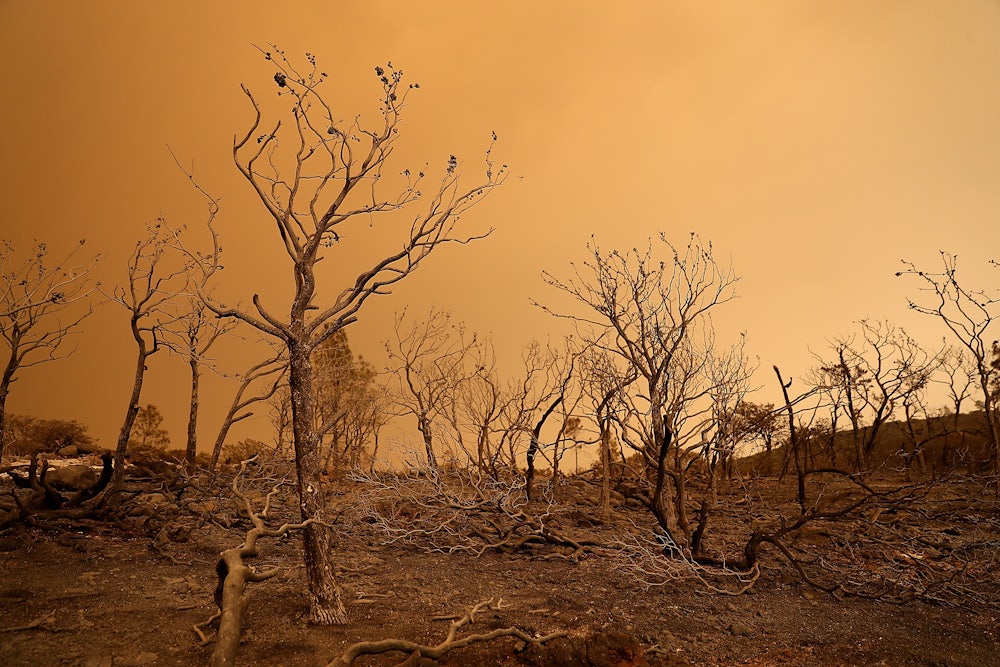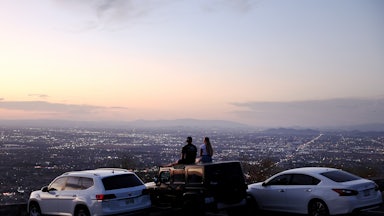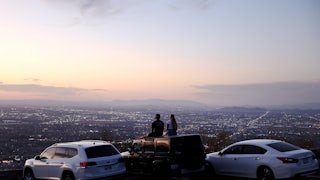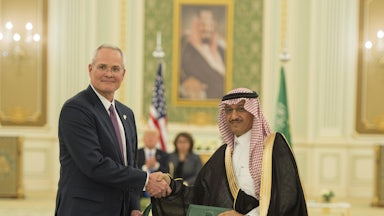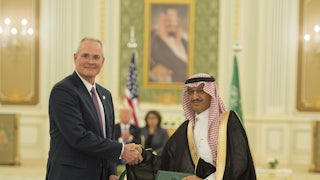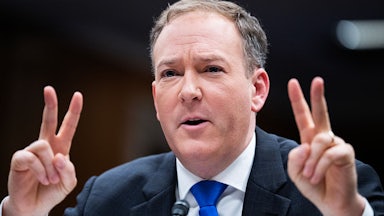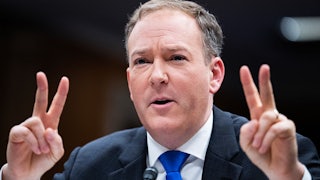The immensity and destruction of the 2018 wildfires in Sonoma County, California, left a visceral impression on Mark Freed. He was 54 and had recently moved to the area with his then wife to escape the crowded city of San Francisco; he’d never lived through a wildfire season before. The walls of flame “make you feel like an ant,” he said. “You don’t feel human, you’re just a thing to burn.”
In 2018 alone, California saw 7,948 wildfires destroy 1,975,086 acres—the Mendocino Complex Fire near Sonoma set the then record for the largest fire in state history. For the next few years, as Freed saw fire after fire, he felt a growing sense of helplessness and foreboding. He would wake up and immediately feel the heaviness set in, filling the quiet. In his panic, he researched places that seemed the most protected from climate change, where fire and extreme heat wouldn’t touch him again for at least some years. But despite continually preparing for the worst to the best of his abilities—moving somewhere he thought would be safer, stocking up supplies, reinforcing his house—he still couldn’t shake the feeling that disaster is inevitable.
“It’s like there’s no control over what’s going to happen to us,” he told me. In trying to name his emotions, Freed said what he was experiencing wasn’t quite anxiety—it was deeper and heavier than that. That looming feeling, he said, was dread.
When burdened by the tangible angst and unease around the future of our planet, a term like “climate anxiety” can seem insufficient. It can feel paltry and shallow, implying we are fretting or fussing over an imagined future. In reality, seeing the mounting global disasters and learning of evidence-based projections of our changing world comes with a heavy emotional gravity. For some, “anxiety” simply doesn’t do it justice. For people like Freed—and myself, and potentially you, reading this now—the phrase “climate dread,” better than “climate anxiety,” legitimizes the real and tangible threat coming toward us and communicates that fear to others.
The importance of this distinction is not just etymological. The emotion of dread affects us differently from anxiety. Understanding how can provide insight into our reactions to climate change, and why it can be so hard to spur people to climate action.
Defining “dread” is a tricky task—any two people might define (or feel) various emotions, including dread, differently—but Andreas Olsson distinguishes dread as being heavier and more concrete than anxiety. Olsson, a professor of psychology at the Karolinska Institute in Sweden, told me that anxiety doesn’t always have a tangible or definite cause, while dread is more targeted. You might feel anxious before a large party, for example, but you might dread that party if you know you’ll have to see and talk to an ex. You might feel anxious about the state of climate change, but you might dread the extreme heat of the coming weekend, the next hurricane season, or the consequences of us failing to meet our carbon emission goals by 2050.
Dread is unique because we feel it when we know, or at least strongly suspect, that “something bad is coming and we can’t stop it,” said Kate Sweeny, a social psychologist at the University of California, Riverside. The anticipation, waiting, and feeling of inevitability are what make dread so unbearable, she said.
In my conversations with Freed, where he called climate change a “credible threat,” he seemed to feel the heaviness of the coming decades too. “We’re probably all going to die horrible deaths” thanks to climate change, he told me.
Waiting with dread is particularly unpleasant when you don’t know when the proverbial shoe will drop, Sweeny told me. She found in one study of law students that indefinitely waiting for results for the bar exam was so painful that finally getting those results brought immense relief to her test subjects—even when they found out they had failed. Other studies show that people would rather experience a higher voltage electric shock immediately than wait for a less intense jolt and that they make similar choices even when deciding the shocks for someone else.
None of us can choose to pull dreaded climate events forward and into the present just to eliminate the waiting. And a consequence of constantly seeing those inevitable and immovable disasters—and knowing that more, and worse, catastrophes are coming—can be a feeling of overwhelming doom and helplessness, said Barbara Easterlin, co-president of the Climate Psychology Alliance of North America. “You get this sense of not being able to act or move forward,” she said.
When dread freezes us like that, it creates emotional effects akin to depression, tamping down on our energy and making it hard to take action. Thinking about the enormity of climate change feels bad; a common instinct is to just avoid those thoughts entirely. Unfortunately, that avoidance creates a feedback loop where the issue becomes only more distressing: where your brain learns and relearns that this subject is terrible and must be avoided at all costs. As Britt Wray, a researcher on climate and mental health at Stanford University, writes in her book about climate anxiety, Generation Dread, “Most of us don’t deeply engage with this reality, not because we don’t care, but because it is painful.… We’re just so deeply caught in the double bind that we become immobilized.”
It’s a slippery slope from helplessness to resignation and acceptance, and mass resignation and acceptance are not strategies that will steer the world off its current disastrous trajectory. But how can you stop feeling dread when you also feel like our world is doomed?
Perhaps the better question to ask is, “How can we transform dread into something more workable?” said Easterlin. “You’ll hear this over and over again: Action is one of the antidotes to dread.” Research seems to support this. A study published this month found that, among teenagers and young adults experiencing climate distress, those who reported making even small life changes or decisions for climate reasons—like reducing single-use plastic consumption, opting to commute via bike instead of car, or participating in political activism—still experienced anger and frustration but were also more likely to feel positive emotions like hope. Those who made fewer of those choices, by contrast, were more likely to experience guilt, shame, sadness, and fear, without the hopeful counterbalance.
Participating in even small actions and thinking about where and how you can be effective can move dread into something positive and hopeful, said Easterlin. It can pull you out of that forward-looking dread and into the current moment, where you can see yourself acting capably and with impact. It takes you out of the role of a passive victim and into a position of agency and strength.
While it’s overwhelmingly seen as a negative emotion, there are some positive side effects of experiencing dread, experts say. Like many emotions, dread is contagious, said Olsson. Whether we express it in person or online, it “catches” and amplifies—which can, paradoxically, help bring more attention and awareness to the issue at hand and possibly bring like-minded people together. This helps us all establish what we communally think is undesirable or should be avoided. As Wray writes: “What we choose to mourn shows what we choose to value.” When everyone is in agreement to feel dread over something like climate change, we can collectively establish a target to work against.
Research shows that community can act as an important tool for personal resilience against climate disasters. One 2010 Australian study of more than 500 children who experienced Cyclone Larry (a category 5 storm) found that those who had more social connections were significantly less likely to develop post-traumatic stress disorder than their peers. Another 2016 paper studying communities in Ghana, Sri Lanka, Fiji, and Vietnam found that groups were better at recovering from “shocks,” including hurricanes and tropical storms, when they had stronger social ties.
When it comes to dealing with your own individual and internal sense of dread, climate-aware experts told me that a number of things can help. The first step is to always acknowledge that climate dread is a feeling that is warranted: We’re living through an unprecedented ecological breakdown of our own making, and it’s natural to feel strong emotions. The second is to realize that dread is not sustainable, and constantly focusing on helplessness can cause you to ignore elements of your life that are meaningful. Some therapists have found that patients respond well to methods like cognitive behavior therapy, acceptance and commitment therapy, and forest bathing—a process where patients spend time in a forest, immersed in its atmosphere—to reconnect with nature.
Mark Freed began talking to a therapist about his dread in 2020. They validated his emotions and helped Freed confront the real consequences of wildfires he experienced, as well as how he imagines fires worsening in the future. He tried forest bathing. And while he’s paused therapy, Freed says his unease is now manageable. He has his routines, he plays with his dogs, he devotes time and energy to the things he cares about—and that’s what makes life livable.
I asked him if his dread still bothered him.
“It’s less uneasy,” he told me. “It’s not gone, gone. Maybe it will [go away]—maybe one day, when we have a better world.”
